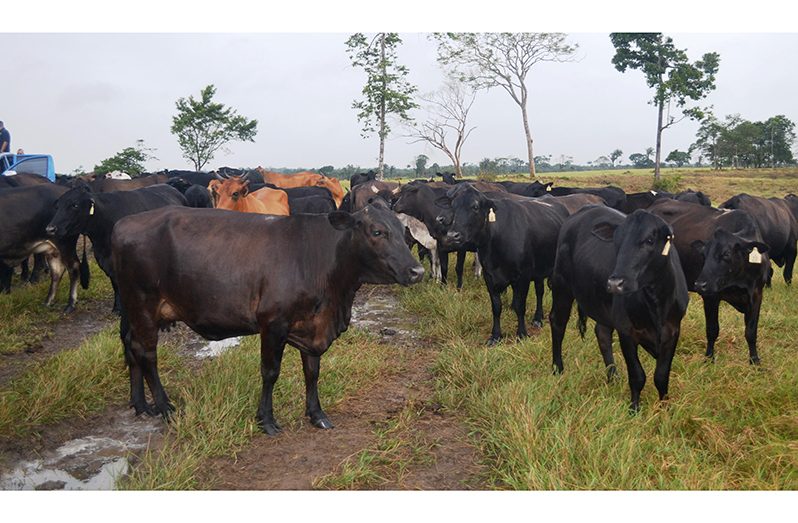-as gov’t seeks to increase meat, dairy production
-livestock farmers urged to form consortiums to take full advantage of opportunities
LIVESTOCK farmers in Guyana are being urged to form consortiums as the Agriculture Ministry looks to roll out its massive breeding project.
At a meeting with farmers in Region Six on Saturday, Agriculture Minister Zulfikar Mustapha disclosed that Guyana has secured some 63 Brahman bulls from Texas, USA, to support the country’s efforts in boosting its local meat and dairy production.
“If you can form yourself in a group, I can give you proper breeding bulls so you can develop your stock,” Mustapha told farmers.
To support the breeding programme, the government will also be developing pastures in Regions Two, Four, Five, Six and 10. Additionally, works are underway for the construction of a state-of-the-art abattoir in Region Five.
As it relates to the dairy industry, Mustapha disclosed that the government will be looking to establish three milk parlours by the end of the year.
BLACK BELLY SHEEP
Meanwhile, Minister Mustapha disclosed that Guyana has already secured 850 black belly sheep from Barbados.
The country recently received an additional 300 sheep from the Caribbean Community (CARICOM) and is expecting the remaining 150 to arrive soon.
In August 2022, Guyana had received 132 sheep which included 112 ewes and 20 rams.
This particular project will see Guyana collaborating with Barbados to build a regional brand of sheep that will decrease the import of lamb and mutton products into CARICOM.
The Ministry of Agriculture is also looking to spearhead a cross-breeding project using the Black Belly sheep and the locally bred sheep.
Under the breed improvement programme, genetic insemination, embryo transplant and cross-breeding will be done.
SELF-SUFFICIENT
To support these initiatives, critical investments are being made to see the country increase its production of feed for livestock.
Mustapha said works on three 3,000-tonne silos to support the cultivation of corn and soya beans at the Tacama Landing are nearing completion.
To further support the expansion of this project, a wharf will be built to allow for the smooth transport of feed from the farm to the farmers.
“We are now building a wharf where barges and ships can go there and collect the product in the Tacama savannahs.”
“Corn and soya are necessary for the livestock industry. Every year, we are importing approximately $US6 million in livestock feed. We are hoping that by 2025 we will produce all the corn and soya for Guyana’s needs. By the end of this year, we will cultivate 3,000 acres and that will increase gradually,” he added.
He explained that if the government is able to further expand production within the next three years, the country will not only become a supplier to the regional market, but will also be self-sufficient in producing its own feed for livestock.
In 2021, six local companies and a regional firm joined together to undertake the massive project that could see Guyana becoming self-sufficient in corn and soya bean over the next few years.
The owners of Guyana Stockfeeds Incorporated., Royal Chicken, Edun Farms, SBM wood, Dubulay Ranch, and Bounty Farm Ltd., along with the Brazilian-owned, N F Agriculture, have partnered to produce soya bean and corn for both the local and regional markets.




.jpg)










